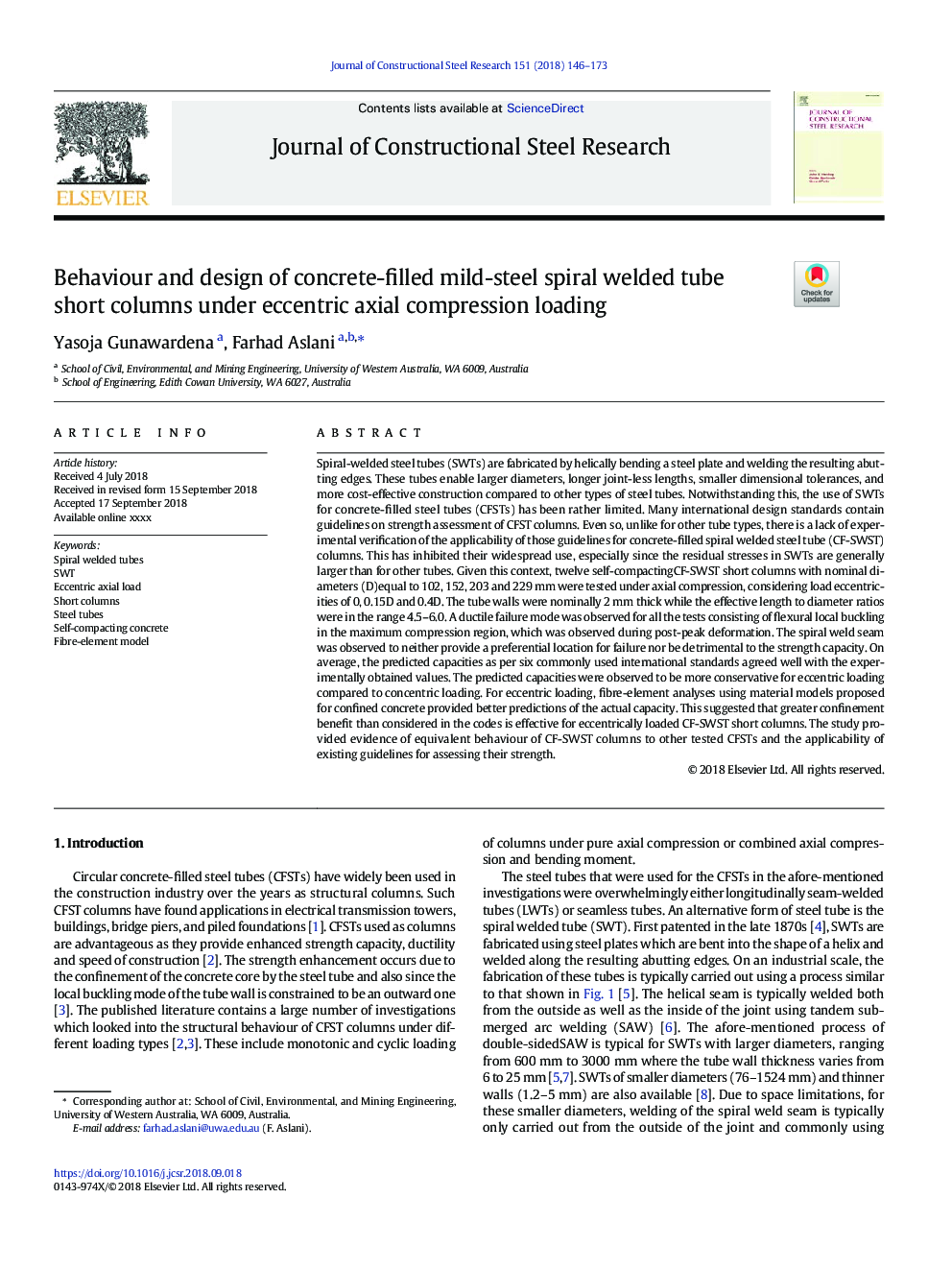| کد مقاله | کد نشریه | سال انتشار | مقاله انگلیسی | نسخه تمام متن |
|---|---|---|---|---|
| 11024200 | 1701175 | 2018 | 28 صفحه PDF | دانلود رایگان |
عنوان انگلیسی مقاله ISI
Behaviour and design of concrete-filled mild-steel spiral welded tube short columns under eccentric axial compression loading
ترجمه فارسی عنوان
رفتار و طراحی ستون های کوتاه لوله ای مارپیچ مجهز به بتن پر شده در زیر بار فشرده سازی محوری غیر عادی
دانلود مقاله + سفارش ترجمه
دانلود مقاله ISI انگلیسی
رایگان برای ایرانیان
کلمات کلیدی
موضوعات مرتبط
مهندسی و علوم پایه
سایر رشته های مهندسی
مهندسی عمران و سازه
چکیده انگلیسی
Spiral-welded steel tubes (SWTs) are fabricated by helically bending a steel plate and welding the resulting abutting edges. These tubes enable larger diameters, longer joint-less lengths, smaller dimensional tolerances, and more cost-effective construction compared to other types of steel tubes. Notwithstanding this, the use of SWTs for concrete-filled steel tubes (CFSTs) has been rather limited. Many international design standards contain guidelines on strength assessment of CFST columns. Even so, unlike for other tube types, there is a lack of experimental verification of the applicability of those guidelines for concrete-filled spiral welded steel tube (CF-SWST) columns. This has inhibited their widespread use, especially since the residual stresses in SWTs are generally larger than for other tubes. Given this context, twelve self-compactingCF-SWST short columns with nominal diameters (D)equal to 102, 152, 203 and 229â¯mm were tested under axial compression, considering load eccentricities of 0, 0.15D and 0.4D. The tube walls were nominally 2â¯mm thick while the effective length to diameter ratios were in the range 4.5-6.0. A ductile failure mode was observed for all the tests consisting of flexural local buckling in the maximum compression region, which was observed during post-peak deformation. The spiral weld seam was observed to neither provide a preferential location for failure nor be detrimental to the strength capacity. On average, the predicted capacities as per six commonly used international standards agreed well with the experimentally obtained values. The predicted capacities were observed to be more conservative for eccentric loading compared to concentric loading. For eccentric loading, fibre-element analyses using material models proposed for confined concrete provided better predictions of the actual capacity. This suggested that greater confinement benefit than considered in the codes is effective for eccentrically loaded CF-SWST short columns. The study provided evidence of equivalent behaviour of CF-SWST columns to other tested CFSTs and the applicability of existing guidelines for assessing their strength.
ناشر
Database: Elsevier - ScienceDirect (ساینس دایرکت)
Journal: Journal of Constructional Steel Research - Volume 151, December 2018, Pages 146-173
Journal: Journal of Constructional Steel Research - Volume 151, December 2018, Pages 146-173
نویسندگان
Yasoja Gunawardena, Farhad Aslani,
